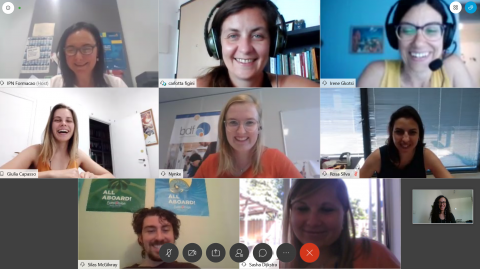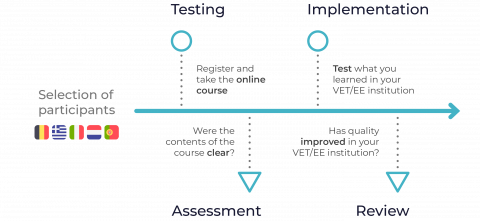2.5 - Allocating the right human resources
Abstract
Allocating the right human resources is a key factor in the success of any training organization. As a
QM, you need to group all the information about the objectives to be achieved, starting contexts,
entrepreneurs profile identification, etc. In order to define the proper human resources organization,
you need to define:
- The number of human resources (staff) taking into account the training level required;
- What the indicated competency profile is;
- What information the competency profile should be evaluated on;
- And, finally, how to evaluate the results related with this action.
Why is this important for you as a QM?
The composition and skills of the training team's staff are key elements for the development of
training.
So as a QM you should guarantee the stability of the training structure, such as an adequate number
of employees assigned to the training activity, who perform the central functions of management and
execution of this activity, calculated according to the following factors:
- The volume of the training activity developed;
- The diversity of education and training areas or differentiated audiences;
- The development (or intention) of delocalised training (dispersed in several geographic places, without its own structure);
- The existence of decentralized structures.
Note: Key roles in the team:
- Quality Manager (QM);
- Administrative staff;
- Trainers;
- Other agents as tutors or mediators (where applicable).
How should I implement the action?
As a QM you must take into consideration the existence of the necessary human resources or if you
have to identify them in the market. So, you can follow the steps:
- Analyse the starting context (results of the TNA – Training Needs Analysis, what stakeholders are involved, possible goals already defined, etc);
- Define a list of competences for the human resources that are needed, taking into account, for example, the following requirements (considered when selecting and hiring new staff): academic training, specific training, professional experience, personal characteristics;
- Evaluate the results (build a list of questions that can help you to evaluate this action).
How should I know if I have made an impact thus increasing the quality of the VET provision and to which extent?
As a QM you can define several indicators to measure the effectiveness of your human resources
policies. For example:
- Was I capable of identifying the human resources according to previous information?
- Can I organize a competence profile?
- Can I identify what kind of information I need in order to evidence the competence profile?
- Can I develop a set of questions in order to evaluate the organization of human resources? (evaluation framework).
- The impact of this action will be reflected in an increase of the completion rate in VET programmes (EQAVET indicator n.o4), increase of the placement rate in VET programmes (EQAVET indicator n.o5), increase of the utilisation of acquired skills at the workplace (EQAVET indicator n.o6).
Links & further readings
- Ministério do Trabalho, Solidariedade e Segurança Social Direção Geral do Emprego e das Relações de Trabalho (DGERT), Direção de Serviços de Qualidade e Acreditação (DSQA). 2017. https://certifica.dgert.gov.pt (23/03/2020).
- Ministério do Trabalho, Solidariedade e Segurança Social Direção Geral do Emprego e das Relações de Trabalho (DGERT), Direção de Serviços de Qualidade e Acreditação (DSQA). 2017.Certification Guide for Training Entities (67)



